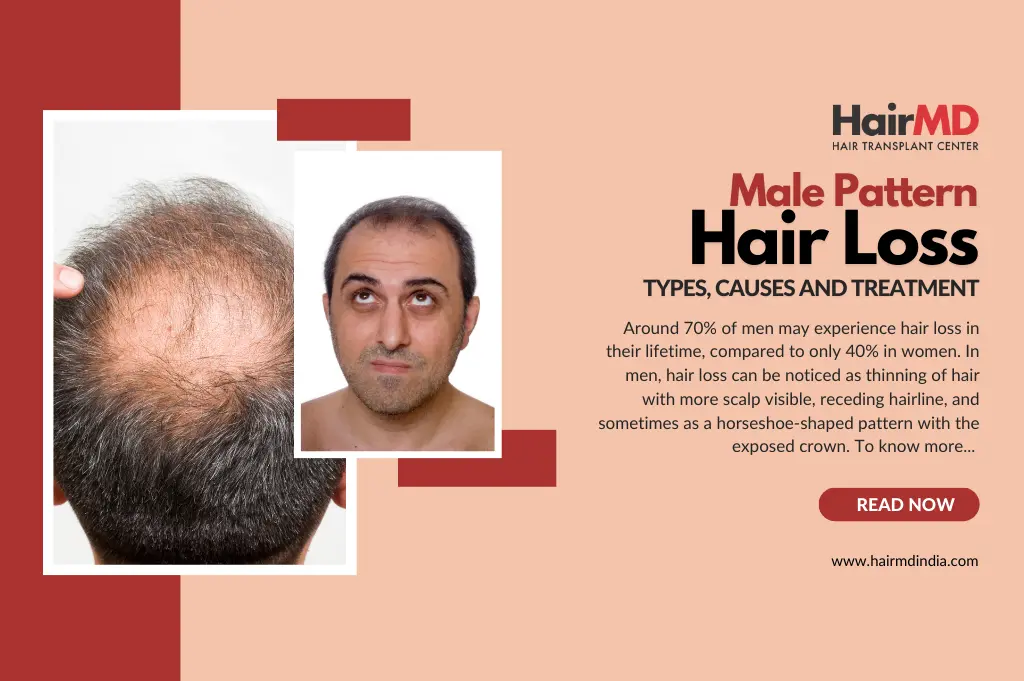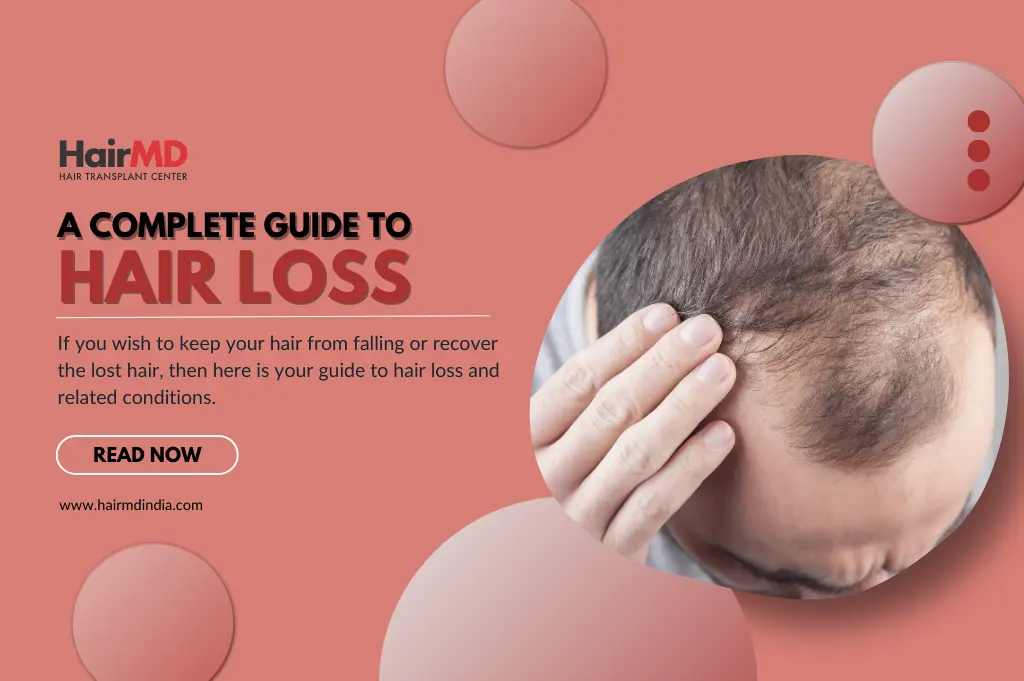Blog, Male Hair Loss | | February 25, 2023

Are you experiencing hair loss? Get in touch with the best of our hair specialists in Pune to understand your hair condition. For a hair treatment or to get hair transplant, book an appointment with our dermatologists near you, call +919584584111.
Hair falls off as part of its natural cycle, which means that seeing some stray hair strands in the shower or on a hairbrush is not usually a cause for concern. Normal hair loss per day for males is about 100 hairs. The average person has about 100,000 hair follicles in total, meaning that a daily loss of 100 hair strands accounts for around 0.1% of your total hair count. Healthy follicles replace fallen hairs with healthy new hair; thus, the cycle continues. However, a person who notices patchiness, large chunks of hair falling out or bald spots should see a dermatologist to help identify the underlying cause.
When you notice bald patches or hair thinning on your scalp, it is termed as hair loss. Your follicles become dormant and stop producing new hair. You may also notice excessive shedding of hair for more than 3 months, which can also be a sign of underlying hair loss.
Around 70% of men may experience hair loss in their lifetime, compared to only 40% of women. In men, hair loss can be noticed as thinning of hair with more scalp visible, receding hairline, and sometimes as a horseshoe-shaped pattern with the exposed crown.
Popularly called male pattern baldness, androgenic alopecia is the most common cause of hair loss in males. Male pattern baldness is most often hereditary, and it generally progresses in one of three ways: a receding hairline, thinning of the hair on the crown, or a general thinning of the hair all over the head top. Eventually, your hairline might develop an ‘M’ shape.
As male pattern baldness progresses further, you may find yourself losing more hair, and you may wind up with a bald spot on the top of your head. Some men with severe male pattern baldness may eventually lose all their hair.
Some other common causes of hair fall in men include:

Hair loss may also be linked to a person’s genetics. And many medical and behavioral conditions may interrupt the growth cycle and cause hair loss. Hair fall in men can begin any time after puberty and progress over the course of years or decades. It starts above the temples and continues around the perimeter and the top of the head, often leaving a ring of hair along the bottom of the scalp. Many men with male pattern hair loss eventually become bald.
Androgenetic alopecia is the most common type of hair loss, affecting most men today. Commonly known as male pattern hair loss, androgenetic alopecia is hereditary but can be managed with medication or surgery.
While inherited male pattern baldness usually has an obvious genetic cause, sometimes, hair loss can have more serious underlying causes, such as certain illnesses, nutritional deficiencies, thyroid conditions, some medicines or supplements and even chronic stress. Talk to your doctor if hair loss is persistent especially on starting any new medicine or diet or hair routine etc .
The development of androgenetic alopecia depends on the interaction of your hormones and genetic predisposition. Under the influence of your androgens (Sex hormones), the hair roots begin to gradually shrink or miniaturize to form thinner and thinner hair. This continues to a point where the root becomes dormant and the hair is lost, causing baldness. The onset of male pattern baldness can begin in your teenage years, but is more commonly seen in adult men, with the likelihood increasing with age. Genetics plays a crucial role too. So if your father or grandfather are bald, chances are high you can’t escape a similar fate.
Doctors use the pattern of hair loss to discern meaningful trends in male pattern baldness. They may take a detailed medical history and perform an exam to rule out certain health conditions as an underlying cause, such as fungal conditions of the scalp or nutritional disorders.

Unfortunately, you can’t change your genetic predisposition to rule out hair loss. However, the good news is that there are a number of treatment options depending on the types of hair loss that can help stop and even reverse male pattern baldness. Based on the severity of your condition, your dermatologist may recommend medication to slow future hair loss, a hair transplant procedure, or both.
While there are no known ways to prevent male pattern baldness at the moment, there are ways to halt the progression of hair loss and baldness. The key is to catch it as early as possible, ideally. As soon as you notice any thinning, the sooner you pay heed to it, the greater your chances of achieving a good recovery.
Factors like underlying medications, age, pollution, stress, etc., can accelerate your hair loss. Apart from medications, a healthy lifestyle and diet are the primary factors that can be your weapons to keep your hair loss in control.
Looking for male hair loss treatment? Look no further than HairMD. Our expert dermatologists use the latest technology for hair loss treatments. So why wait? Book your appointment today with HairMD.
Are you looking for hair fall solution? Get in touch with the best of our hair doctors in Pune to cure your hair loss. To book an appointment for a hair treatment or hair transplantation, contact our dermatologists near you, call +919584584111.


Blog, Male Hair Loss|Dr Dhanraj Chavan|
February 25, 2023
Hair loss is a distressing condition where many of us can find ourselves helpless and hopeless. We at Hair MD understand the way you feel when you see your hair...


Blog, Male Hair Loss|Dr Dhanraj Chavan|
February 25, 2023
Hair is an elongated threadlike structure made up of a protein called keratin that emerges from a pore in the skin called the hair follicle. Humans have around 1,00,000 hair... 34163